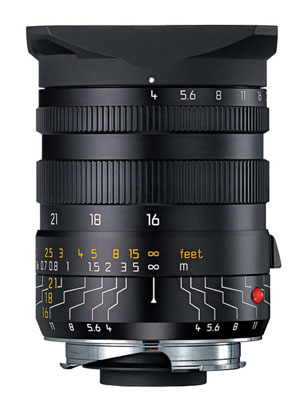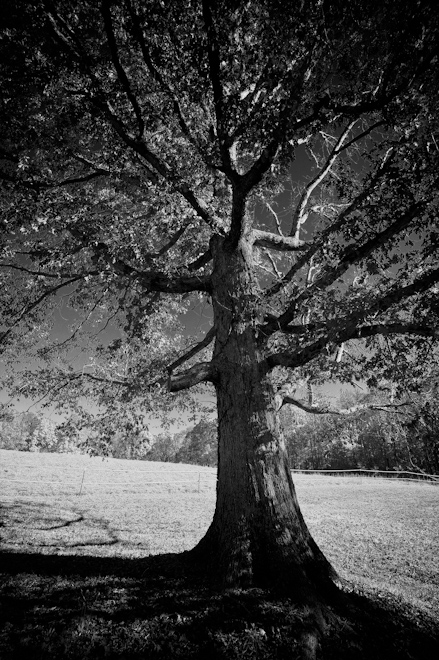A Versatile Wide-Angle
Leica Tri-Elmar-M 16-18-21mm Asph. Lens
I’ve been happy with the Leica 18mm Super-Elmar lens, so I figured I wouldn’t need (or want) the Leica Tri-Elmar 16-18-21mm lens on my M9. Turns out, I couldn’t have been more wrong.
Often referred to as the WATE (Wide-Angle Tri-Elmar) to distinguish it from the MATE (28-35-50mm Medium-Angle Tri-Elmar), this lens is unusual for Leica in that it covers more than one focal length. Zoom lenses are the norm with point-and-shoot and DSLR cameras, however with rangefinder cameras, such as the Leica M9, fixed-focal-length lenses are the norm. A fixed-focal-length lens usually provides a sharper and more consistent image than you can achieve with a zoom lens.
The biggest advantage for the three-focal-length WATE over a fixed-focal-length lens is not having to change lenses as often. The biggest disadvantage? The maximum aperture is f/4, so it wouldn’t necessarily be the best choice for low-light situations.
Since my 18mm is in the middle of the WATE’s focal length range and is slightly faster at f/3.8, why have I fallen in love with this unusual lens? First off, I like to shoot wide-angle, so I was curious to see how a 16mm would perform. I currently have the WATE on loan for two weeks, and I was struck by how differently it renders from my 18mm.
While both lenses are incredibly sharp from edge to edge, the WATE is less clinical in its sharpness. It also has a bit more contrast. Those qualities aren’t necessarily better. They’re just different.
The 18mm SE was a better choice for photographing Manhattan buildings
with precise lines and hard edges.
The WATE was a better choice for photographing a tree in late afternoon
with evocative shadows and luminous grays.
These differences can be emphasized in your post-processing so that the unique character of each lens is enhanced. You might sharpen an 18mm SE photo more than usual to bring out the cleanness of the lines, or you might darken a WATE photo more than usual to intensify a dreamlike quality.
The WATE isn’t for everyone. It’s a somewhat specialized lens (strongly wide-angle) designed for a manual-focus camera. That said, if you’re shooting with a Leica M-series rangefinder, don’t dismiss it (as I did) just because you already have a wide-angle lens. Though it covers three different focal lengths, the image quality is up to the usual Leica standards. And the resulting photos will have a look that you won’t be able to match with any other lens.
News & Reviews

